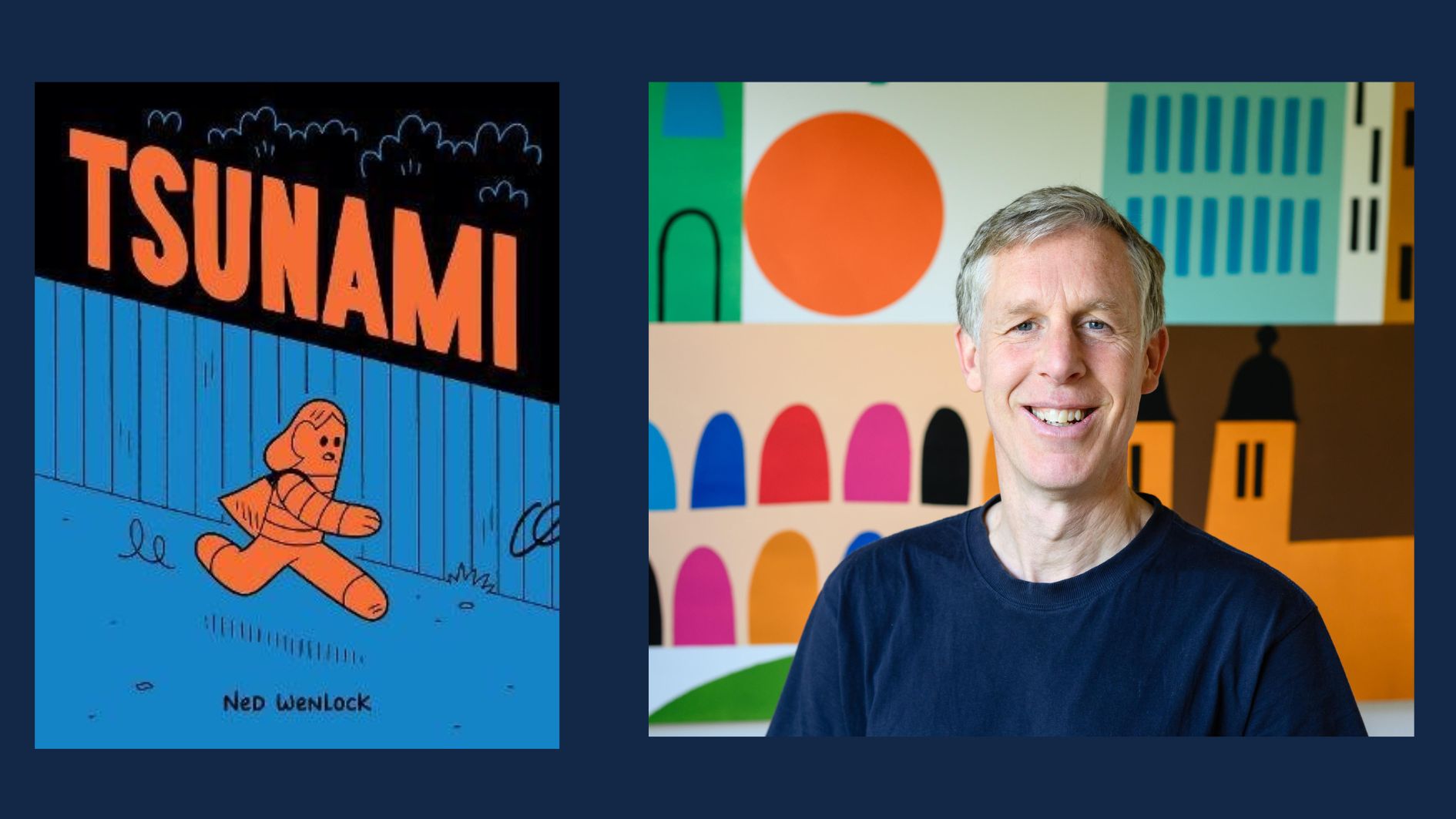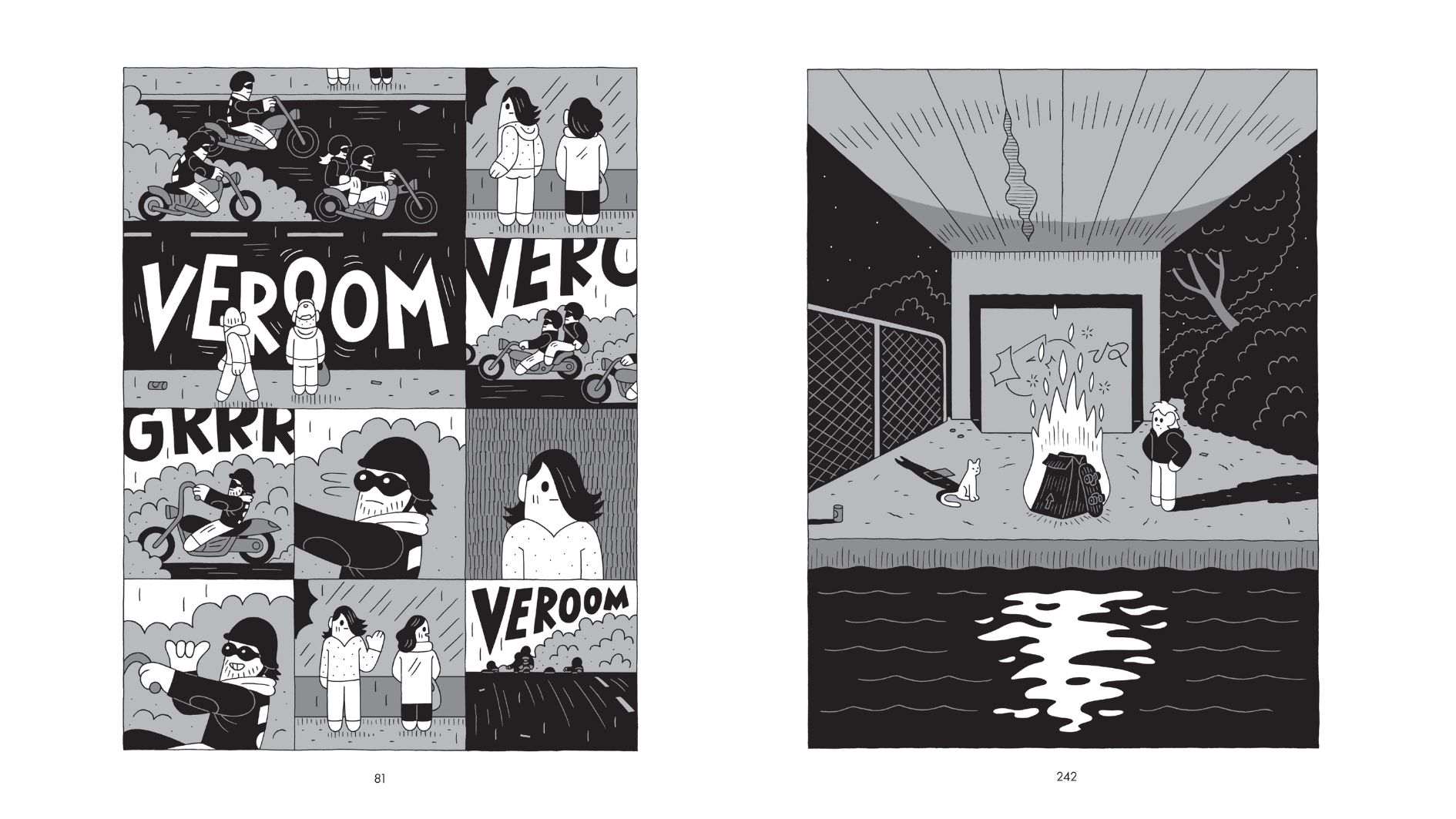Eddie Monotone sits down with Ned Wenlock to talk about winning the NZSA Best First Book Award at the NZCYA Book Awards, his approach to visual storytelling, and how Tsunami marks a departure from his previous work.

Eddie Monotone (EM): Congratulations on your Best First Book Award at the children’s book awards. What does the win mean to you?
Ned Wenlock (NW): I was very surprised to win best first book at the NZCYA. I might be wrong but I feel that comics are seen as niche in this country, and to have Tsunami evaluated with ‘real books’ has given my inferiority complex a bash on the head.
EM: Tsunami is a complex portrait of Kiwi adolescence, and a beautiful piece of comic art. It is your first book, but you’ve been making comics in various forms for years. Does this one feel different, or like a continuation of what you’ve been doing?
NW: It does feel like a departure. I think previously with comics they’d always been a sideline for me. Back in the day I used to work on a kids show called What Now. And it was cool. I loved it. But it was for kids and I needed an adult outlet for myself, just to put ideas down and thoughts, and comics were perfect for that. But I never took them 100% seriously. I never really put my all into them. So this time, doing Tsunami, I was thinking—what if I actually put some effort into this?
I had a creative block for a long time on long stories, because I wasn’t sure how to approach them. A lot of my short stories were episodic to try and get to something longer. But I could never really find that thread that went through them that made them bigger than the sum of their parts, you know. So doing this has enabled me to do that, and it’s sort of broken through that creative block. Hopefully I’ll be able to do more stuff like this in the future.
I feel that comics are seen as niche in this country…
EM: Do you think people make assumptions about your work based on its cartoony, kid-friendly appearance? And is that necessarily a challenge, or an opportunity to surprise readers?
NW: Personally, I don’t even think about it anymore, because it’s become a visual language for me. I really like the simplicity. It’s almost like writing. But with pictures, you know, in the simplicity of it. I’m not particularly a word-type person. I’m more of a visual-type person. But I imagine that if you’re a poet, certain combination of words together can create an amazing effect in your mind, and that’s what I try to do with the pictures.
I think surprise is probably good in terms of people looking at the book thinking it’s a cute kind of thing, and then if they’re willing to spend the time with it beyond the cuteness of it, they will hopefully find other emotions embedded in it.
As I’m working through it, and editing, that’s what I’m going for. I’m going for clarity of emotion, you know, in any scene. If it feels fake, I take it out, or if it doesn’t 100% do the feeling that I’m trying to go for then it goes out, too.

In terms of the cuteness, I think I’ve always done that. Even back with the zines that I was doing, they were kind of mundane horror zines. There was this kind of a surface level that put you at a distance because I was never committing to any kind of real emotions. I was just being silly, and the visual style worked with that. And for a long time I didn’t know whether I could do serious things with this style. I thought, ‘I’m stuck in this kind of jokey zone with the style, because it looks so cartoony’. I don’t know what changed my mind. But for the first time I thought, ‘why don’t I just try real emotions and things, and see if it works’.
EM: You’ve worked a lot in animation. Moving between a medium where you can show entire motions to one where you only have discreet images to tell a story, how do you pick which moments to show?
NW: I was talking to someone the other day about storyboarding for animation. They come from a total animation background, and they were describing the way that they storyboard, which is very much moment to moment with the character.
And I was thinking about my own approach to the same kind of thing, and I realised I’m more the camera. I’m not 100% a great animator. I’m more of a director, you know. And even when I’m drawing comics, I’m thinking about the camera. Who’s looking through the camera and what that camera can do to create feeling.
…to have Tsunami evaluated with ‘real books’ has given my inferiority complex a bash on the head
Often it’ll start with a wide shot of somewhere to establish where they are. Then we may go into a character, see the situation through their eyes, but then I might pull out to give the whole thing some space, and to let the reader think about what’s happening. Also to give you a feeling that the writer of this book has things in store for you down the track, you know. So there’s a lot that goes into the choice of how you do that kind of thing. But I think, yeah, the simple answer is, I’m just looking through the camera. Always.
EM: Tsunami is drenched in a specific New Zealand-ness that is so familiar and true to life. How much of it is based on real places or events?
NW: The story draws from all over the place. But developing the story and developing situations that Peter was going to get into, I would often think about my own childhood, and think of life in New Zealand. I’d think, ’is there a situation that I can use in this book?’. Then I can really get into the right emotions of what’s happening, and the real feeling.
I grew up in the UK until I was 13, and some of the story comes from that. And then we moved here and lived here ever since. The other side of it is having moved to Paekākāriki on the Kāpiti Coast. That’s basically where the story is set. And there’s a certain feeling here that I thought would be really interesting to capture. This is where we’ve raised our kids. And so we’ve been involved with other families and stuff like that. And all of that has seeped into it.
It is a fictional town, nothing like this town exists, but to me it feels real. Even the place where Peter goes out into the sand dunes and stuff. There are places like that up the coast, where you can just go and get lost for a while, if you want to.

EM: What has the reception been from readers?
The reception to Tsunami has been very positive, there are parts in the book that really chime with readers and this has led to good discussions.
I haven’t had a lot of feedback from younger readers, the few I’ve spoken to think it’s a page turner which ends too abruptly, they want to know what happens next.
Do you have plans for more books in the future?
I would really like to make another book. Of all the forms I’ve used to tell stories, comics is my favourite, and particularly now that I’ve waded into the length of a graphic novel where there is room to do interesting stuff. I have some ideas but I just have to work out how to finance the time needed.


Eddie Monotone
Eddie Monotone is a cartoonist, illustrator and parent. He has been a part of the Kiwi comics scene for many years, publishing comics and cartoons both in print and online. When he’s not making comics he’s probably thinking about comics, and sharing those thoughts with anyone who’ll listen. www.edmocentral.com



